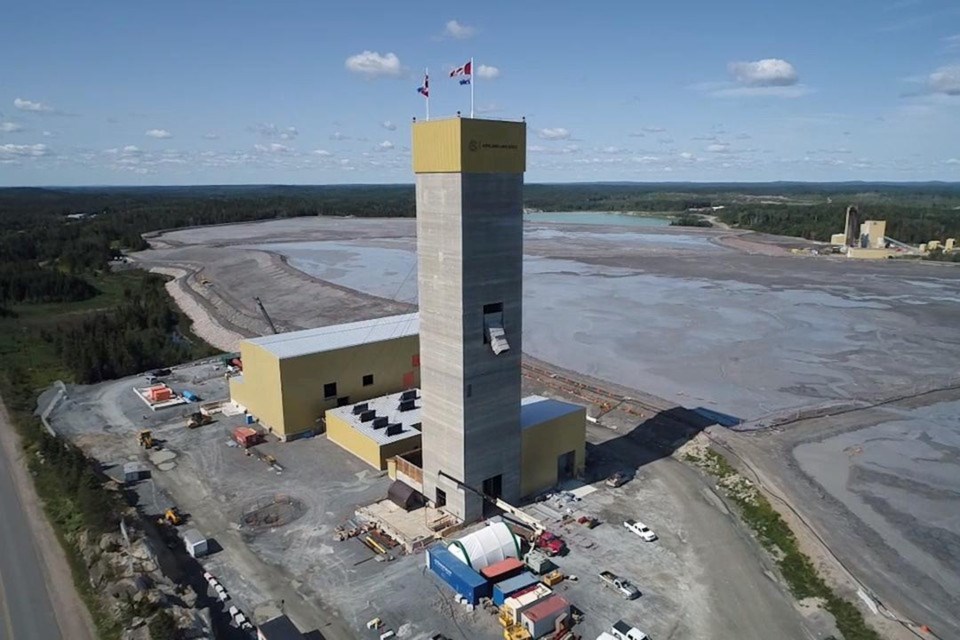The Abitibi Gold Belt of northeastern Ontario and western Quebec continue to be the happy, high grade hunting grounds for Agnico Eagle.
The seemingly never-ending gold potential of the Toronto miner's Detour and Kirkland Lake operations were among the highlighted items in the company's second quarter results released this week.
Agnico Eagle reported an adjusted profit of $322.4 million this week, up 11 per cent from a year earlier, on the back of record gold production of 873,204 ounces from its mines in Ontario, Quebec, Nunavut Territory, Mexico and Finland. Its all-in-sustaining cost is US$1.150 per ounce.
The company said these were "better than anticipated" operating performances despite forest fires in Northern Ontario and western Quebec, which impacted operations due to air quality problems,
Agnico Eagle's strategy these days isn't about making big-splash acquisitions but maximizing the gold opportunities in the ground it already holds.
The company is running a slew of technical studies on a pipeline of projects in the Abitibi that are in close proximity to the infrastructure at its existing mines and processing plants in Ontario and Quebec.
At Detour, northeast of Cochrane, Agnico has ten drill rigs in the field chasing gold within and below its West Pit project, where they've drilled more than 128,500 metres throughout the first six months of this year.
Drill results from beneath the pit keep turning out high grade showings. One recent drill intercept pulled from a depth of 400 metres revealed 12.9 grams of gold over 12.9 metres.
There appears to be open-ended mineralization extending two kilometres west of the pit reserves. The best drill hit showed 2.8 grams of gold over a 14.4 -metre length of core at a depth of more than 1,000 metres.
This plunging trail of gold has Agnico studying underground mining scenarios. Those drill results will be incorporated into a resource model for a potential mine which will come out in the first half of 2024..
Never shy with the exploration dollars, Agnico's budget for Detour heading into 2023 drilling was $33 million, enough to secure 171,000 metres worth of drilling. That's been topped up by $5.2 million for an additional 35,000 metres for the remainder of this year.
Want to read more stories about business in the North? Subscribe to our newsletter.
At Kirkland Lake, there are new mining opportunities aplenty with its Macassa Near Surface and Amalgamated Kirkland (AK) deposits and its Upper Beaver Project, north of Larder Lake.
Part of Agnico's overall evaluations for this year will be figuring out the logistics to route ore by truck or rail to processing facilities in the region with excess capacity.The goal is to churn out ounces at lower capital costs with a reduced environmental footprint.
Both the Macassa Near Surface and the AK deposits are accessible from an existing surface ramp at the Macassa Mine.
Gold production from the Near Surface deposit started during the second quarter and processed through the Macassa mill at Kirkland Lake. Production from the AK deposit could start this year. Where that ore would be milled is still being studied.
With the commissioning of the new No. 4 shaft and increased production from the Macassa deep mine, the Macassa mill is expected to reach its 1,650 tonnes-per-day capacity by the middle of this year.
That means trucking or rail opportunities as the company is considering transporting the ore to its LaRonde Complex in Quebec, 130 kilometres away. That would avoid the capital costs associated with expanding the Macassa mill.
Agnico said annual gold production from these two deposits could add between 20,000 and 40,000 ounces into the overall mix starting this year.
Its Upper Beaver and acquired Wasamac mine project in western Quebec each have the potential to produce between 150,000 to 200,000 ounces and be low-cost mines. Production could start in 2030 and 2029, respectively.
Agnico Eagle has also been drilling in and around its cornerstone Macassa Mine in Kirkland Lake, looking for gold extensions at its Main Break, east of the South Mine Complex and west of the AK deposit, all close to current mine infrastructure. The drills have been biting into high-gold grade below 1,000 metres and beneath the former Kirkland Minerals and Teck Hughes mines.




